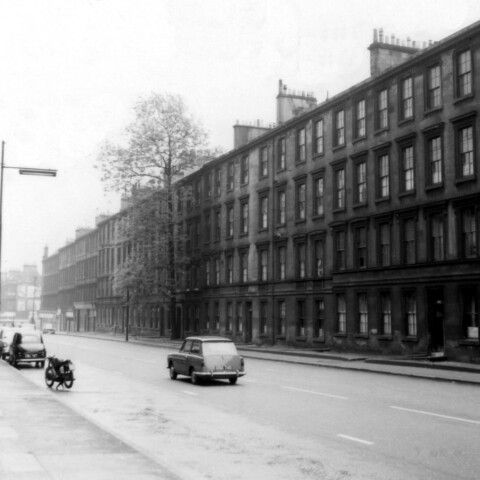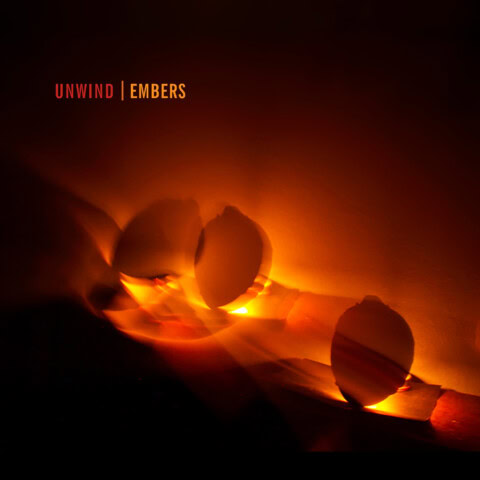There’s a lot of controversy around Tidal’s premium, ‘better than CD’ MQA formula. GARY STEEL has a good hard listen through an award-winning streamer.
I was discussing the relative merits of DVD-Audio and SACD iterations of classic albums on my social media stream when Mike Wildish of Wildash Audio put the question to me: Had I checked out Tidal Masters, a section of the Tidal streaming music service that offered hi-res MQA (Master Quality Authenticated) albums?
Mike’s enthusiasm was catchy, and he was quick to offer to send me one of the products he imports and endorses: a Bluesound Node 2 streamer on which to check out Tidal.
I’m not fundamentally against music files or streams as long as they sound as good as a CD, although it would take hi-res streams to really sway my allegiance. Like many old bastards I’ve had a lifetime of listening to and enjoying vinyl, tapes and CDs, and many of the rituals that go with those old formats, so I’m not about to reject them altogether. But there are some compelling reasons for either keeping files on an external disc or ‘the Cloud’ or using streaming services, the big one being that they’re kinder on the environment. Not to mention the sheer convenience.
I’ve got a Cambridge Audio CXN streamer – also award-winning – but at the time my exchange took place with Mike, the CXN offered Spotify but not Tidal. A couple of weeks after I took delivery of the Bluesound Node 2, Cambridge Audio updated their software to include Tidal.
 Spotify has proved invaluable to me over the past couple of years, not for proper listening but for checking out new releases or things I’d meant to have a listen to but had never found in the shops. It also makes for useful background dinner music through a wireless Bluetooth speaker or two, but whenever I played Spotify through my main system (a Prima Luna amp and GoldenEar Triton 1 speakers), even at the best quality setting (which is, hilariously, called Extreme) it sounded flat and lacked engagement. It’s something I’ve experienced often with MP3s: there’s nothing obviously lacking but when you listen closely you realise why you’re not enjoying it so much, and it’s to do with the way the encoding strips out the layers. Many music fans reckon it’s impossible to tell the difference between a 320kpbs file and CD-quality, but it’s glaringly obvious on a sonically analytical full spectrum hi-fi system.
Spotify has proved invaluable to me over the past couple of years, not for proper listening but for checking out new releases or things I’d meant to have a listen to but had never found in the shops. It also makes for useful background dinner music through a wireless Bluetooth speaker or two, but whenever I played Spotify through my main system (a Prima Luna amp and GoldenEar Triton 1 speakers), even at the best quality setting (which is, hilariously, called Extreme) it sounded flat and lacked engagement. It’s something I’ve experienced often with MP3s: there’s nothing obviously lacking but when you listen closely you realise why you’re not enjoying it so much, and it’s to do with the way the encoding strips out the layers. Many music fans reckon it’s impossible to tell the difference between a 320kpbs file and CD-quality, but it’s glaringly obvious on a sonically analytical full spectrum hi-fi system.
So the idea of hearing real CD quality from a streaming site, as well as a selection of albums in so-called Master Quality was just too appealing.
I didn’t do any of the things that you’re supposed to do to make the most of the Bluesound Node 2 player because this time round I was only interested in one thing: Tidal, and how it sounded. What was immediately apparent however, was just what a nifty and visually appealing piece of audio gear the Node 2 is. While my CXN takes traditional component form and is supposed to live in an audio rack, the Node 2 is about a quarter of the size (and half the price) and is obviously designed to compete with the likes of Sonos as a piece of multi-room kit.
 If I was so inclined I would have one of these set up in each room, but I’m old-fashioned like that: I just want a dedicated audio room where I can get away from the hubbub in the rest of house.
If I was so inclined I would have one of these set up in each room, but I’m old-fashioned like that: I just want a dedicated audio room where I can get away from the hubbub in the rest of house.
Regardless, I loved the fact that the Node 2 was insanely easy to set up, and it was literally plug-and-play. The CXN streamer is a great piece of kit but it’s no breeze to set up and the app is buggy. The Node 2 doesn’t even come with a remote, which might annoy purists, but the app is excellent and intuitive and I was using it within minutes. (Of course, the Node 2 does all sorts of stuff including accessing your music server, and it’s got a bunch of internet radio stations at the ready as well).
Tidal is buried within the app itself and I found that from the time I turned it on I was practically a Tidal convert. Here I am with loads of CDs and vinyl that I’ve never even listened to, and boxes full of CDs that I need to revisit and decide whether I want to keep them or not, and I was instead being a Tidal glutton.
 Once I got going I found the whole thing liberating. All those artists I’d read about in obscure music magazines but which I hadn’t ever heard were there for the picking. (Well, a few really obscure ones were missing in action, and in some cases the artist catalogues were irritatingly incomplete). And it wasn’t like doing the same thing on Spotify, where I always felt like I wasn’t quite hearing the real thing because of the limitations on the sound quality. Instead, I was listening to everything in what purported to be genuine CD-quality, and sure enough, it sounded great: big and beefy, sweet at the top end and gloriously spacious.
Once I got going I found the whole thing liberating. All those artists I’d read about in obscure music magazines but which I hadn’t ever heard were there for the picking. (Well, a few really obscure ones were missing in action, and in some cases the artist catalogues were irritatingly incomplete). And it wasn’t like doing the same thing on Spotify, where I always felt like I wasn’t quite hearing the real thing because of the limitations on the sound quality. Instead, I was listening to everything in what purported to be genuine CD-quality, and sure enough, it sounded great: big and beefy, sweet at the top end and gloriously spacious.
And that’s just the CD-quality section. We haven’t gotten started yet on the Master Quality section, where Tidal’s claim is that it’s essentially directly from the recording desk. You know, studio masters. Hmm, don’t know about that, but sure enough, the sound was phenomenal.
Which leads me to problem number 1: Tidal’s Master Quality selection is stink. It’s the same problem that has always inflicted audiophile pressings and SACD releases: that whoever decides these things thinks that anyone who likes great quality audio has extremely conservative listening tastes. In short, between the artists I’d never heard of or the teen/rap acts I wouldn’t listen to if you paid me, there was a deluge of MOR music like Sting, Fleetwood Mac, Chicago, Ben Harper, blah-blah-blah. Yes, there are good (and probably great) albums to be found there, but boy it’s slim pickings!
 One new Master Quality release I did enjoy was American Utopia by David Byrne, the erstwhile leader of Talking Heads. It’s sonically complex and dynamic because of contributions from a stellar support cast, including Brian Eno, and the difference between the quieter and louder sections totally floored me (and gave me a little fright, once or twice). Unfortunately, however, I don’t have the CD to do any comparisons. In fact, one of the few I did have on CD was SDavid Bowie’s Scary Monsters (And Super Creeps). I listened to the 2017 Toni Visconti remaster of ‘Ashes To Ashes’ and was instantly transported to a different place. Suddenly, I was aware of an extended sound stage and each layer of instruments and vocals was completely separated out. Then I listened to my 2001 CD remaster of the same track, expecting it to sound sharp and tinny by comparison. Except that it wasn’t, and here’s where it gets interesting, and where my doubts about MQA start to kick in.
One new Master Quality release I did enjoy was American Utopia by David Byrne, the erstwhile leader of Talking Heads. It’s sonically complex and dynamic because of contributions from a stellar support cast, including Brian Eno, and the difference between the quieter and louder sections totally floored me (and gave me a little fright, once or twice). Unfortunately, however, I don’t have the CD to do any comparisons. In fact, one of the few I did have on CD was SDavid Bowie’s Scary Monsters (And Super Creeps). I listened to the 2017 Toni Visconti remaster of ‘Ashes To Ashes’ and was instantly transported to a different place. Suddenly, I was aware of an extended sound stage and each layer of instruments and vocals was completely separated out. Then I listened to my 2001 CD remaster of the same track, expecting it to sound sharp and tinny by comparison. Except that it wasn’t, and here’s where it gets interesting, and where my doubts about MQA start to kick in.
While my older CD of the Bowie classic was indeed sharper at the top end, it was sharp mostly in a good way. It lacked the amazing sonic separation of instruments and the extended sound stage but made up for it in precision stereo effects and a sizzling top end and loads of punch. The bass also seemed more naturally deep and clear.
What was going on? Could it be true that in coming up with a hi-res lossless format MQA has ended up compromising on ultimate quality?
 I did the same non-scientific listening test with the recent remaster of Led Zeppelin’s live album, How The West Was Won, comparing the CD version to the Master Quality Tidal stream, and was presented with a similar conundrum. Admittedly, this is a 1972 live recording that’s hardly audiophile in the first place, but it’s scrubbed up pretty well, and is way less compressed than the group’s remastered studio albums. The Tidal version sounded great until I compared it to the CD, which I preferred for its clarity and punch. Preferring a CD over a ‘better than CD Tidal Master Quality’ stream? Surely not!
I did the same non-scientific listening test with the recent remaster of Led Zeppelin’s live album, How The West Was Won, comparing the CD version to the Master Quality Tidal stream, and was presented with a similar conundrum. Admittedly, this is a 1972 live recording that’s hardly audiophile in the first place, but it’s scrubbed up pretty well, and is way less compressed than the group’s remastered studio albums. The Tidal version sounded great until I compared it to the CD, which I preferred for its clarity and punch. Preferring a CD over a ‘better than CD Tidal Master Quality’ stream? Surely not!
I must emphasise here that it’s simply a case of my personal preference, and that there could be various factors at work that I don’t quite comprehend. And what I must point out is that until I started comparing Tidal streams with CDs I was totally loving listening to Tidal.
I couldn’t help wondering whether the Bluesound Node 2 itself might be the sonic weak link, although to describe it as such seems unfair, because the sound it produces is superb. It’s just that my lovely Yamaha CDS2000 sounded better to my ears; ears that have admittedly grown accustomed to that sound over time. I did wonder though whether the Node 2 was really designed to be played through less esoteric (and revealing) systems than my own, especially ones designed for multi-room environments.
 There’s no grand conclusion to be made here and the jury is most definitely out. I stand by my opinion that the Bluesound Node 2 is a stunning piece of kit that has great form factor and an Apple-like simplicity about it. And I still feel liberated by Tidal, and will probably just have to pay the rather steep $30 (approximately, depending on the US exchange rate at the time) they demand for a ‘Hi-Fi’ subscription, because it sounds so much better than Spotify.
There’s no grand conclusion to be made here and the jury is most definitely out. I stand by my opinion that the Bluesound Node 2 is a stunning piece of kit that has great form factor and an Apple-like simplicity about it. And I still feel liberated by Tidal, and will probably just have to pay the rather steep $30 (approximately, depending on the US exchange rate at the time) they demand for a ‘Hi-Fi’ subscription, because it sounds so much better than Spotify.
And when I next get a break from routine I’ll download that Cambridge Audio Tidal app so that I can find out whether there are any substantial sonic differences between the way the CXN and the Node 2 sound when streaming Tidal. But that’s for another day…
















MQA is actually a lossy format.
Using the Bluesound Node 2 in comparison to a Yamaha CDS 2000 is a no brainer, of course the CD sounds better. Suggest if a comparison of MQA / HIRES to CD is undertaken that it be via essentially similar pieces of equipment.
Did you ever get around to comparing Tidal played on the Node 2 versus the Cambridge CXN.
You can use the yamaha optical out and use the bluesound dac to compare it to tidal using same dac
How can you use optimal out on the Yamaha. You have to bypass the DAC in the Bluesound by using optical/coax and the into another DAC
The Yamaha does not have the option of capturing other sources than CD